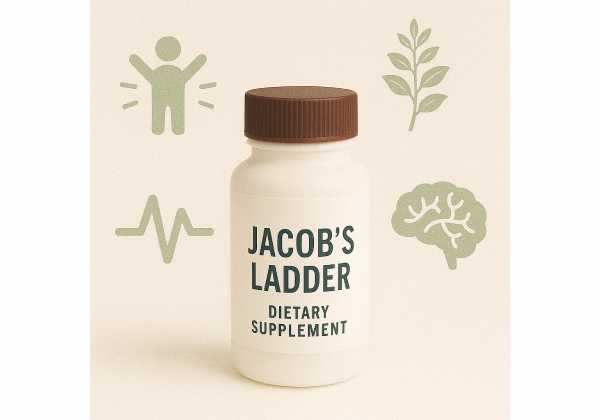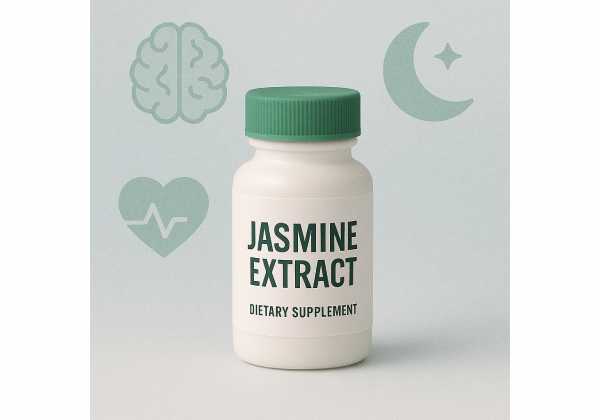Jacob’s ladder: Benefits for throat comfort and skin, how to take it, dosage, and safety
Jacob’s ladder (Polemonium caeruleum), sometimes called Greek valerian, is a hardy perennial with fern-like leaves and sky-blue bells. Beyond its ornamental charm, the plant has a documented history in European and Asian folk medicine, where roots and aerial parts were prepared as soothing teas, expectorant syrups, or topical washes. Modern phytochemical work identifies triterpenoid saponins and phenolic compounds as...
Jakhya: Anti-inflammatory Potential, Cooking Tips, Recommended Intake, and Safety
Jakhya—also known as wild mustard or Asian spiderflower seed—comes from the plant Cleome viscosa. In the Himalayan foothills of India, particularly Uttarakhand, these tiny, dark seeds are a staple tempering spice that crackles in hot oil and lends a nutty, herbal aroma to vegetables, dals, and mountain-style stir-fries. Beyond the kitchen, Cleome seeds and aerial parts have a long...
Jamaican cerasee benefits for blood sugar, metabolism, and cholesterol: how it works, dosing, and safety
Jamaican cerasee is one of the Caribbean’s most recognizable “bush teas.” Known elsewhere as bitter melon or bitter gourd (Momordica charantia), this vine’s leaves and stems are boiled to make a distinctly bitter tea used for “cleansing,” digestive upset, colds, skin wash, and—most commonly—blood sugar support. Modern research focuses on its potential effects on glucose metabolism, insulin resistance, and...
Jambul benefits for blood sugar and cholesterol: how it works, dosage, uses, and safety
Jambul—also called jamun, java plum, or Syzygium cumini—is a deep-purple fruit from the Myrtaceae family with a long history in South and Southeast Asian food and medicine. Beyond the tangy fruit, traditional practices also use its seeds, leaves, and bark. Modern research explores jambul for metabolic health (especially blood sugar and cholesterol), antioxidant and anti-inflammatory actions, and gut-friendly polyphenols...
Jamu for joint comfort and digestion: evidence-based benefits, brewing steps, dosing, and side effects
Jamu is Indonesia’s time-honored tradition of herbal tonics—freshly pounded roots, leaves, spices, and fruits simmered, pressed, or blended into functional drinks. Sold from hand-carried baskets (jamu gendong), home kitchens, and modern cafés, jamu recipes range from warming ginger brews to golden turmeric-tamarind blends. While each formula has its own story, most aim at everyday wellness: better digestion, steadier energy,...
Japanese ginseng benefits and how to use it: evidence-based properties, recommended dosage, and safety
Japanese ginseng—most precisely Panax japonicus (also called Chikusetsu-ninjin)—belongs to the same adaptogenic family as Korean (Panax ginseng) and American ginseng (Panax quinquefolius). While all Panax species contain ginsenosides (triterpene saponins), P. japonicus is notable for its bamboo-like creeping rhizome and a distinctive profile rich in ocotillol-type saponins such as chikusetsusaponin IVa and ginsenoside Ro. In traditional East Asian practice,...
Japanese mint for tension headaches and digestion: proven effects, best forms, dosage, and side effects
Japanese mint—most commonly referring to Mentha arvensis (also called corn mint or field mint) cultivated in Japan and East Asia—has a long record in food, fragrance, and traditional remedies. Its essential oil is one of the world’s richest natural sources of menthol, a cooling terpene responsible for mint’s signature feel. Beyond flavor, menthol interacts with cold-sensing receptors on the...
Japanese pagoda tree extract benefits and how to use it: vascular support, real results, dosage, and safety
Japanese pagoda tree extract—prepared from the flower or flower buds of Styphnolobium japonicum (syn. Sophora japonica)—is a flavonoid-rich ingredient best known for delivering rutin and related quercetin glycosides. Historically used in East Asian medicine for cooling heat, supporting vascular integrity, and easing bleeding, it now appears in modern supplements aimed at capillary strength, venous tone, and skin or mucosal...
Japanese pepper: Sansho Benefits, Uses for Cooking and Skin, Dosage, and Side Effects
Japanese pepper (Zanthoxylum piperitum), also known as sansho or Japanese prickly ash, is a culinary spice and traditional herb valued for its bright citrus–pine aroma and a signature tingling sensation. That buzz is caused by alkylamides like hydroxy-alpha-sanshool, which interact with sensory nerve channels to create a lively, numbing feel on the tongue and skin. Beyond flavor, Japanese pepper...
Japanese thistle: Uses for Bleeding and Inflammation, Tea and Extract Guide, Dosage, and Risks
Japanese thistle (Cirsium japonicum) is a hardy wild thistle long used across Japan, Korea, and China as a cooling, hemostatic herb. In traditional practice it’s known for helping stop minor bleeding, easing swelling, and supporting liver health. Modern lab and animal studies add detail: extracts show antioxidant activity, may modulate inflammation, and have been explored for metabolic and skin-aging...
Jasmine extract: Anxiety Relief, Skin Benefits, Proper Dosage, and Safety Precautions
Jasmine extract has a long history in traditional beauty and wellness. Derived mainly from Jasminum sambac and Jasminum grandiflorum, it appears in aromatherapy blends, skin serums, and soothing balms—and, importantly, it’s more than a fragrance. Modern analyses show concentrated aromatic molecules (like benzyl acetate, linalool, and jasmone) and polyphenols that can influence mood, support skin barrier comfort, and offer...
Java ginger: Uses for Digestion and Liver Support, How It Works, Dosage, and Safety
Java ginger—better known to botanists as Curcuma xanthorrhiza (temulawak)—is a rhizome from Indonesia with a long history in Javanese and wider Southeast Asian herbal practice. It is not the same as common kitchen ginger or turmeric, though it belongs to the same Zingiberaceae family. Traditionally, people reach for Java ginger to ease post-meal heaviness, support bile flow, and maintain...
Javanese ginseng: What It Is, Proven Benefits, Dosage for Tea and Extracts, and Safety Warnings
Javanese ginseng (Talinum paniculatum)—also called “Java ginseng,” “Som Jawa,” or “Jewels of Opar”—is a leafy, succulent herb with fleshy roots that resemble Asian ginseng. While unrelated to Panax ginseng, it’s valued across Indonesia, Brazil, and parts of Asia and Latin America as a food and traditional remedy. Modern lab and animal research suggests antioxidant, cardioprotective, antimicrobial, and possible reproductive...
Javanese turmeric: Digestive Relief and Bile Support, Best Forms to Take, Dosage Ranges, and Risks
Javanese turmeric—Curcuma xanthorrhiza Roxb., also called Java turmeric or temulawak—belongs to the ginger family but is a distinct species from the familiar kitchen spice Curcuma longa. In Indonesia’s jamu tradition, Javanese turmeric is a staple for easing post-meal heaviness, supporting bile flow, and maintaining liver comfort. Modern analyses highlight two headline constituents: xanthorrhizol (a sesquiterpenoid abundant in this species)...
Jelly ear mushroom: Active Polysaccharides, Real-World Benefits, Practical Dosing, and Side Effects
Jelly ear mushroom—most commonly referring to species in the genus Auricularia such as A. auricula-judae and the widely cultivated A. heimuer—is a firm, springy, ear-shaped fungus prized across East and Southeast Asia for its clean crunch and nutrition. You will see it sold as “wood ear,” “black fungus,” or “kikurage.” In kitchens, it brings texture to stir-fries, soups, and...
Jellyfish collagen: How It Compares to Fish and Bovine Collagen, How to Take It, Dosage, and Interactions
Jellyfish collagen is a marine-derived protein obtained from species such as Rhopilema esculentum and Rhizostoma pulmo. Interest in this ingredient has grown because it offers a non-mammalian alternative to bovine and porcine collagen, with a distinctive amino acid profile and excellent biocompatibility for food, cosmetic, and biomedical applications. In nutrition, jellyfish collagen is sold as powders, capsules, and ready-to-drink...




















